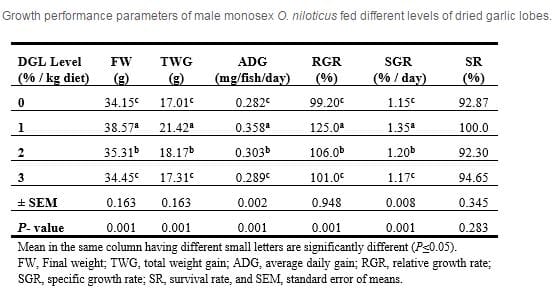Garlic is one of the earliest known medicinal plants and has been used to improve growth and resistance of a number of livestock and fish. A growing interest has emerged in using herbs in animal feeds by both researchers and feed companies.
It is known to possess a vast variety of biological functions such as antithrombotic, anticancer, antioxidant, improving immune-system, lower serum lipid and glucose levels and blood pressure.
Previously, dietary garlic has shown potential effects as a growth promoter, immune system enhancer and physiological enhancer agent for the fish species Clarias gariepinus, Oncorhynchus mykiss and Cyprinus carpio.
Bioactive components of garlic, include several sulfur-containing compounds such as Allicin (responsible for the distinctive odor), diallyl-disulfied, diallyl-trisulfied and others, which are responsible for most of the pharmacological properties of garlic.
Garlic is a rich source of calcium (Ca), phosphorus (P), zinc (Zn), iron (Fe) and has a high content of carbohydrates and as a consequence a high nutritive value. It also contains silica (Si), sulfate (S) salts, B1, B complex, A and C vitamins.
The present study was carried out to evaluate the effects of dietary supplemented by dried garlic lobes (DGL) on growth performance, feed utilization, chemical composition of the whole fish body, and physiological parameters of monosex Nile tilapia (Oreochromis niloticus) fingerlings for 60 days.
Fish with average body weight were randomly distributed into four treatments (0, 1, 2, 3% DGL per kg diet).
Results revealed that 1% DGL was the best treatment, which gave the highest significantly different values in growth performance, feed utilization, chemical composition of the whole fish body and hematological and biochemical parameters among all treatments.
So, it is recommended that the inclusion of 1% DGL / kg diet as feed additives of all male monosex O. niloticus are more useful for improving their growth performance, feed utilization, chemical composition of the whole fish body and physiological responses.
April 2015




